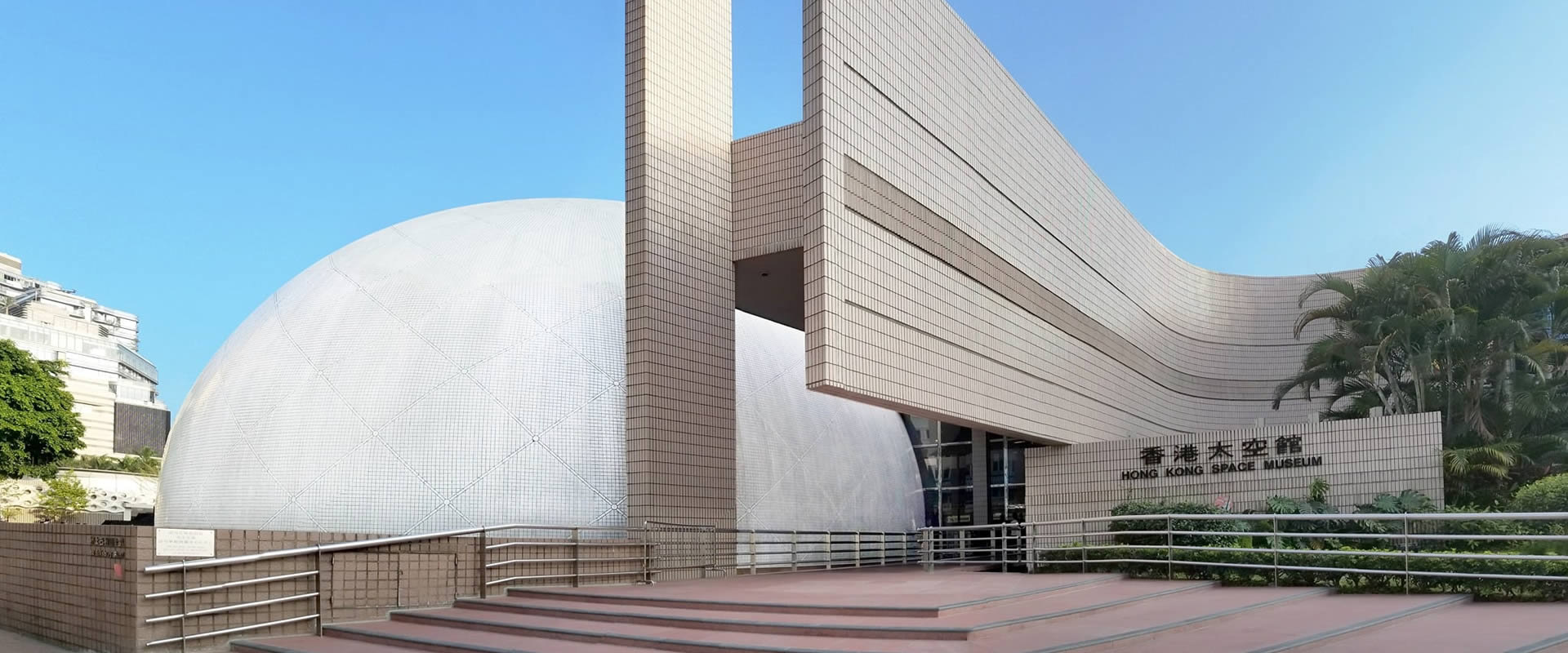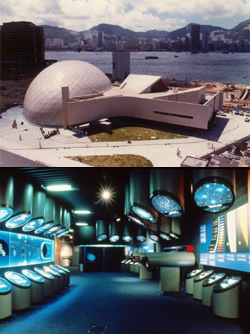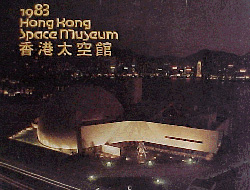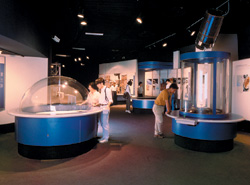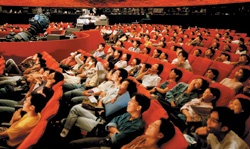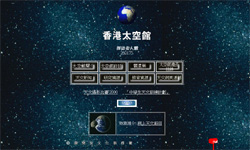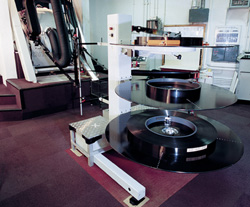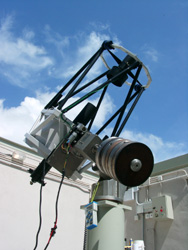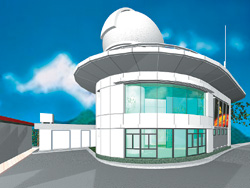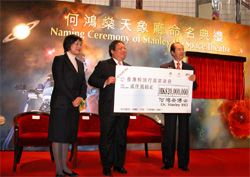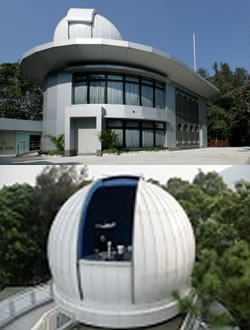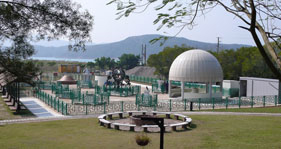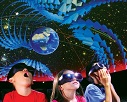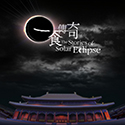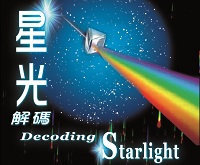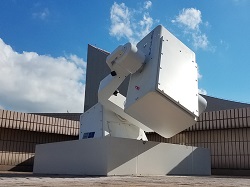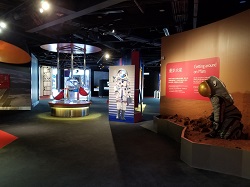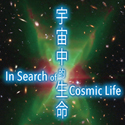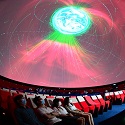 Web Content Display
Web Content Display
About Us
Tab Menu
 Web Content Display
Web Content Display
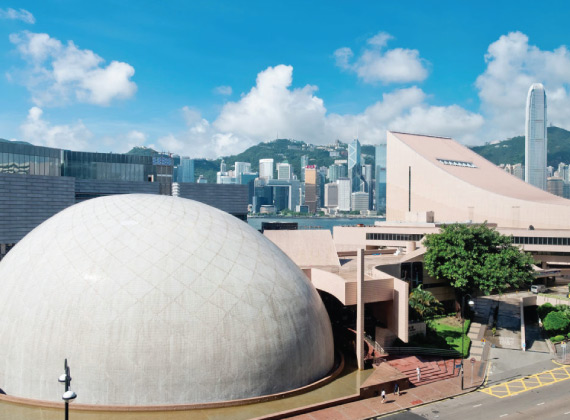
Strategically located at the seaside of Tsim Sha Tsui, the Hong Kong Space Museum commenced its construction in 1977. Mr. Joseph Ming Gun LEE of the Public Works Department was the chief architect of the project. Hong Kong Space Museum was commissioned in October 1980. It is the first local planetarium for the popularisation of astronomy and space science. The unique egg-shaped dome renders the 8000-square-metre museum to be one of the most famous landmarks in Hong Kong.
The Museum comprises two wings - east and west. The former, the planetarium's nucleus, has an egg-shaped dome structure. Beneath it are the Space Theatre, the Hall of the Cosmos, OMNIMAX projector room, workshops and offices. The west wing houses the Hall of Space Exploration, the Lecture Hall, the Gift Shop and offices.
Inside the Space Theatre, there is a hemispherical projection dome with a diameter of 23 metres. Boasting the first OMNIMAX film projector in the eastern hemisphere, the Museum is also the first planetarium in the world to possess a fully automatic control system at its Space Theatre. The Museum produces Sky Show to be displayed using the digital planetarium projection system, and introduces the best foreign Dome Shows to Hong Kong.
The Museum has two thematic exhibition halls: the Hall of the Cosmos and the Hall of Space Exploration on the ground and first floors respectively. The exhibits, predominately interactive, enable visitors to learn through a series of entertaining and educational experiences.
Last but not the least, the Museum organises plenty of extension activities each year, including stargazing, fun astronomy classes, lectures and astronomy film shows, and observation programmes for special astronomical events, etc. You can also find a lot of information related to stargazing, basic astronomy, astronomical news and educational resources in the Museum's homepage.
 Web Content Display
Web Content Display
Vision
We provide world-class museum facilities and services and make the Museum a regional astronomy and space science education centre.
Mission
Our Mission is to:
- To enrich our community life by providing high quality museum services and a lifelong learning environment for all.
- To deliver professionalism and excellence in our museum services.
- To provide multi-lingual planetarium shows and exhibitions that foster community interest in astronomy and space science, and that promote cultural exchange.
- To provide activities that establish the museum as an astronomy education centre.
- To provide a safe, clean, comfortable and friendly environment that generates high levels of visitor satisfaction.
- To establish superior collections reflecting our regional heritage in astronomy and space science.
- To build and maintain a highly motivated, committed and satisfied workforce.
Values
We achieve our mission by embracing these core values:
- Visitor focus
- Quality
- Creativity
- Professionalism
- Continuous improvement
Scope of Collections
- Display materials of historical or popular interest for public viewing, such as meteorite specimens, artifacts and models, antique instruments, or replica of spacecraft; and
- Research and reference materials such as astronomical films, slides, tapes and literature for programme productions, extension activities or improvement of existing facilities.
 Web Content Display
Web Content Display
We keep at least 90 percent of the hands-on exhibits in the Museum in use at all times.
For suggestions on exhibit operations and services, please feel free to contact the duty officers.
 Web Content Display
Web Content Display
-
The Urban Services Department set up a working group to study overseas experience in establishing planetariums. The study was aimed at laying the groundwork for setting up the future Hong Kong Space Museum.
-
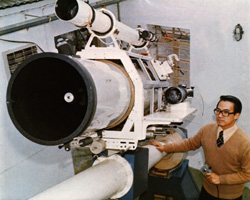
The Hong Kong Government decided to build the Hong Kong Space Museum at Tsim Sha Tsui and invited Mr. Joseph Liu to serve as Planetarium Advisor. Mr. Joseph Ming Gun LEE of the Public Works Department was the Chief Architect of the project.
-
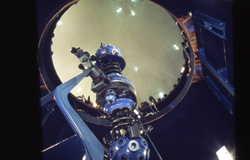
Planetarium Mr. Joseph Liu was transferred from the Education Department to the then Urban Services Department and assumed the post of Planetarium Adviser.
USD signed contract with the Carl Zeiss Company to purchase a planetarium and other equipment with a price of HK$3,050,000.
-
USD placed order to an American company to buy the projection screen for the Space Theatre with a price of HK$660,000.
-
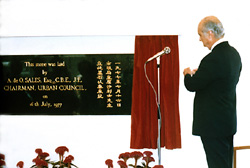
Foundation of Hong Kong Space Museum To start the foundation work and the building of the Hong Kong Space Museum.
-
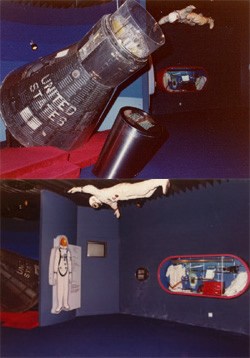
Under the sponsorship of the Smithsonian National Air and Space Museum, NASA agreed to lend the Aurora 7 capsule of the Mercury Project, moon rock and spacesuit to the Hong Kong Space Museum for exhibition.

